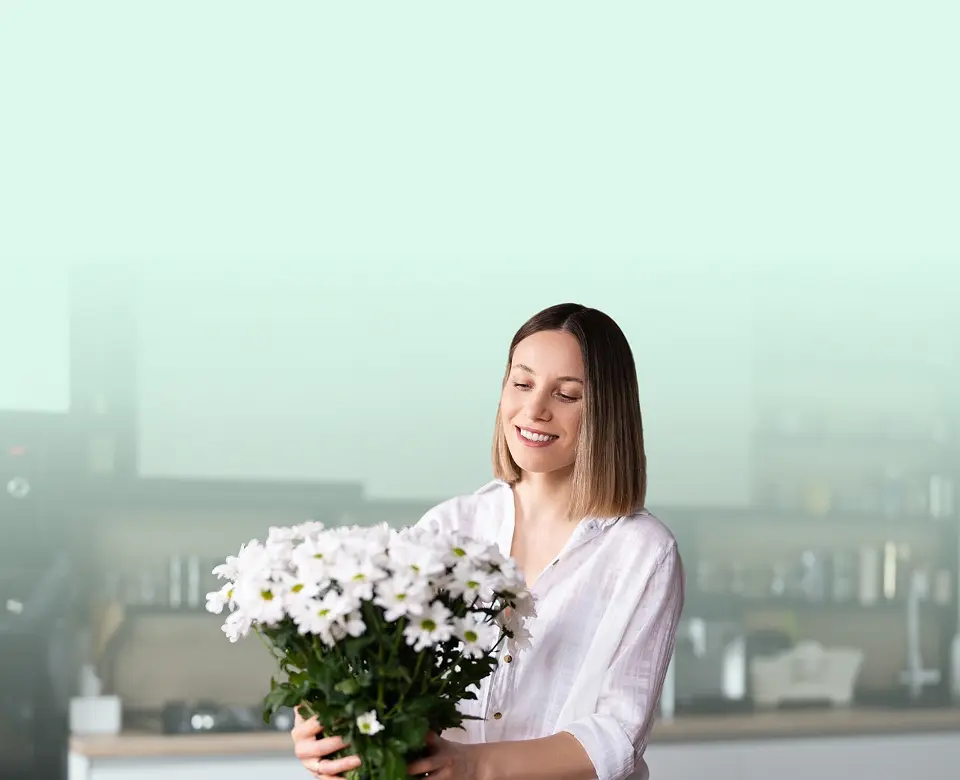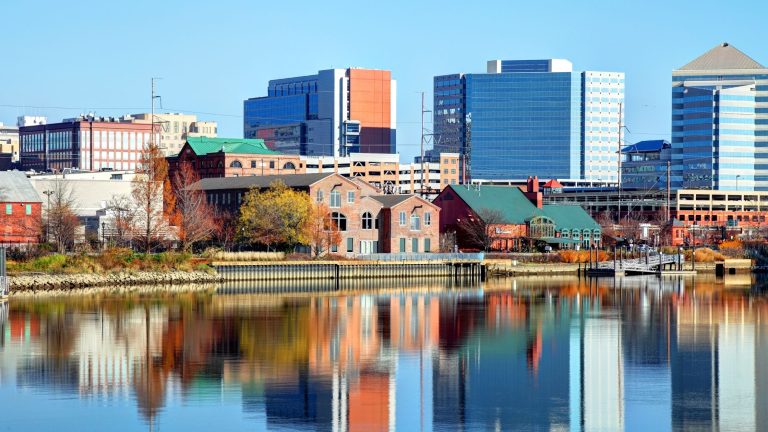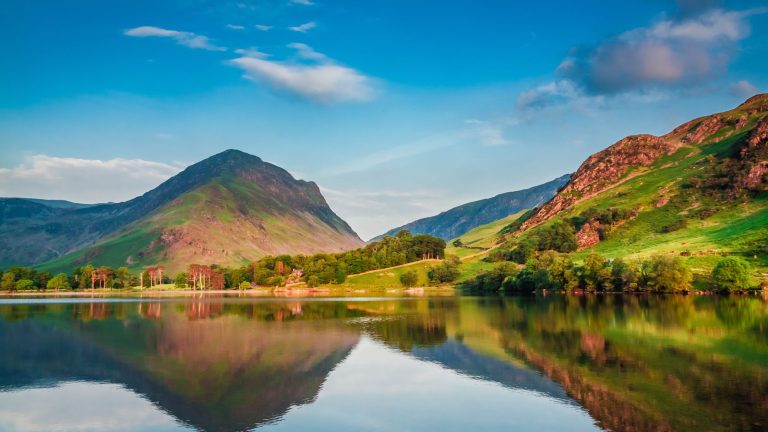
Do you prefer a cup of coffee from home while traveling?
If you find it difficult to part with your coffee of choice on vacation, you’re not alone! Hear from five coffee lovers who purposefully pack their go-to brews with them wherever they go.
Meet the Coffee Connoisseurs
Shonali Paul, founder of Paul John Caffeine Company, is one of a few brands in the US market that specializes in Indian coffee. Memories of bold yet creamy, enriching yet relaxing coffees at her grandfather’s Coorg estate inspired her to share this special brand of coffee with others.
Tyler Pawlak co-founded Blended Bean Coffee with his wife, Jenna. The Pawlaks operate a small-batch coffee roastery in Cincinnati, OH. He believes that great coffee starts with great beans and a clear flavor profile, producing bold flavors and uncompromising quality.
Mike Perry is the Founder and Roastmaster at Klatch Coffee, a family-owned and operated coffee company established over thirty years ago. Klatch Coffee has 12 brick-and-mortar cafes in Southern California and a global distribution network for purchasing its fresh-roasted coffee.
Marianne Perez Fransius is the founder and CEO of Bebe Voyage. She helps families with small children who love to travel connect with one another. A fan of Bolivian coffee, Marianne shares her love for these uniquely flavored beans, taking them wherever she goes.
Shrey Agarwal and his wife, Isheeta Borkar, are the Travelicious Couple. Professionals by day, adventure seekers at heart, and world travellers since 2018, Shrey and Isheeta aim to help others navigate the full-time work and travel lifestyle on their own terms.
Coffee of Choice

Shonali reveals, “I love Indian origin coffees. Of course, I’m biased towards Paul John Caffeine coffees. Some of my favorite blends, like Smell of Rain, which is a blend that has chicory as well, and notes of caramel and dark chocolate, which is great as a latte.
“Indian coffees are complex and can be brewed in so many ways to enhance various flavors. Indian coffees are naturally shade-grown and handpicked due to the topography of the estates, which makes it even better.”
Paul John Caffeine ships freshly roasted coffee in the US with a subscription offering.
Tyler shares, “I drink all kinds of coffees from different origins. Since I roast my own coffee, I have the ability to experiment and play around with a wide variety of beans that just aren’t accessible to the general public.

“A go-to bean to travel with would be a solid washed bean from Brazil. Brazil puts out a really well-balanced product that tends to be fuller in body and lower in acidity. It has all the traditional or stereotypical coffee flavors, so it’s easy to know what to expect.
“Best not to take any chances when you’re traveling. Brewing (and roasting) coffee is all about consistency, so stick with something you know to eliminate as many variables as possible.”
Mike notes, “Over our 30-year history of roasting coffee here at Klatch, Kenyan coffees have become my personal favorite – I take 3lbs every week from our roastery to enjoy at home!
“I love coffees from Kenya for their bright, acidic characteristics with fruit-forward flavors. As a coffee roaster and importer, I have sampled thousands of coffees from around the world over the past decades, but I always return to my favorites from Kenya.”

Marianne favors South American beans, relaying, “When I traveled to Bolivia, I discovered its rich and diverse terroir. While it doesn’t produce a high volume of coffee, the quality is superior.
“My favorite is the creamy, sweet Bolivian Bourbon, which I picked up at HB Bronze Coffee Bar in La Paz. It’s difficult to get Bolivian coffee abroad, but some specialty shops and importers do carry it. So whenever I come across any Bolivian bean, I’ll buy it. I have yet to be disappointed.”
Shrey says, “I usually drink medium roast beans from Colombia or Ethiopia. I like them because they’re smooth and flavorful without being too bitter or strong. Colombian beans give that chocolatey, nutty comfort, while Ethiopian beans add a bit of citrus.
“Most of the time, I order from Onyx Coffee Lab or pick up beans from good local roasters while traveling. If we’re staying in a place for a few weeks, I’ll even time a shipment to arrive there. Onyx is consistent and has beans I already know I like, so it saves me from taking a gamble with unknown brands.”
How Brand Affinity Affects Coffee Bean Choice

While taste is often at the top of most coffee drinkers’ lists for why they choose the beans they do, other factors are often at play, such as health benefits, the way the coffee beans are grown, how they’re harvested, and prepared, as well as the mission of the brand and how it invites customers to interact with it.
That said, what’s most important to you about your coffee? With taste being equal, what else draws someone to a bean or its brand?
Shrey says, “For me, it is taste and familiarity. It’s nice to wake up in a new place but still have a bit of your usual routine. I don’t need anything exclusive, but I do care about flavor and freshness.”
Shonali states, “I think that the way Indian coffee is grown in a shade grown lush estate, along with various other fruits and spices, and then handpicked and processed is a story in itself that has not been told to most of the world and is something that made me fall in love with Indian coffee.”

Tyler gestures, “I think transparency is the best thing to look for in coffee. The more you know about the coffee you drink, the more informed you are to make decisions about it.
“I also believe it’s important to make sure that the whole supply chain is fairly treated and compensated accordingly, and knowing more about the coffee helps me to know what is happening.”
Mike volunteers, “I make multiple sourcing trips every season to meet with coffee producers around the world, and I cherish the people I’ve met. Many of them are like family, and I return to some of them year after year.
“Building these relationships is among the most important factors when deciding which coffees to import – we’re looking for producers who share our vision and values.”
Coffee Brands on a Mission
One coffee brand we’ve brought on trips to the cottage is Bulletproof Coffee, a great option for those who want to avoid mold, created by Dave Asprey. You can find it in major supermarkets and health food stores.
A brand of coffee I’ve been wanting to try is Seven Weeks Coffee, which delivers in the US (but not yet in Canada or to other countries).
Their beans are organically grown, third-party tested for mold, and are low in acidity. What gets me really excited, though, is that when someone drinks Seven Weeks Coffee, they are supporting pregnant mothers and saving precious lives, donating 10% of every sale to pregnancy care centers across the US.
Aptly named, a baby at seven weeks’ development in the womb is the size of a coffee bean, and for the first time, his or her heartbeat is clearly detectable.
I love how their company is on a mission. They are producing a competitive product while holding themselves to the highest standards.
The Art of Brewing Coffee Away From Home

How you make your coffee is definitely part of its enjoyment.
Here’s a ‘day in the life’ of our experts’ coffee routines.
Shonali reveals, “I make South Indian filter coffee from a South Indian coffee filter that percolates coffee slowly, producing a concentrated shot that I drink with steamed milk. That’s always my first cup of coffee. It’s something I grew up drinking, and the first cup of coffee I ever had, so it’s nostalgic.
“I do love my black coffee as well, though, so my second cup of coffee tends to be a pour-over coffee as that brings out the notes of each coffee well. And gets me through the rest of the day.”
Tyler notes, “My coffee for the day is typically split into two parts. In the morning, I always start off with a brew under pressure. This comes in the form of either espresso or coffee from a moka pot. The intensity of those cups is just what I need to get the gears turning and make sure I’m ready for the day.
“After lunch, I normally settle into the afternoon with a pour-over coffee. At this point in the day, I’m looking for a more exploratory experience where subtlety has more importance than strength or intensity.”
Mike confirms, “Currently, I’m drinking Gikanda Ndaro-ini, an AA-graded Kenya bean. I roast it to a medium-light level to develop the hints of citrus, tangerine, and lemon that are common to Kenyan coffees. At any given time, I try to make sure we have at least one great, single-origin Kenya coffee available for our subscribers – without one, it feels like something is missing!”
Shrey travels with an AeroPress and a small hand grinder. Here’s his routine:
- Heat water (if there’s a kettle, great, if not, he improvises)
- Grind beans fresh
- Brew a cup using the AeroPress
“It takes maybe 5 to 7 minutes and doesn’t require much gear. If I’m in a rush or don’t have access to hot water, I’ll grab a decent cup at a local cafe instead,” Shrey says.
Telling the Difference Between a Good Coffee and a Great Coffee

What does it take to go from good to great? There’s drinking a coffee, and then there’s drinking a really great coffee. Survey says:
“Coffee can go wrong in so many ways. But I think the difference between a good coffee and a great coffee is when every step of the way is perfectly executed, which means the growing of the coffee bean, the processing of that bean, roasting, and finally the brewing.” – Shonali
“Every coffee can be good coffee, but the care and attention brought to specialty grade coffee is what makes a great cup. If you want to put a number to it, you could literally say that the 80-point threshold for specialty grade coffee is the cutoff line between good and great. It isn’t just the bean, though. Simply grinding your own coffee before brewing instead of pre-ground can elevate a good cup to a slightly ‘gooder’ one.” – Tyler
“Good coffee wakes you up. Great coffee makes you pause. For me, great coffee is smooth, has no weird bitterness, and tastes just as good halfway through the cup as it did in the first sip. It doesn’t have to be fancy, just clean, balanced, and enjoyable. Oh, and the temperature matters!” – Shrey
Why Do You “Hire” Your Coffee?

Clayton Christensen, the late Harvard Business School professor, espoused his “Jobs to Be Done” theory. The gist of it is that someone will buy a product and use it to accomplish a goal or ‘get a job done.’
What is the ‘job that must be done’ for which you ‘hire’ your coffee?
Is coffee a motivator? Does it help you to focus, or is it doing something else?
Shonali says, “For me, coffee in the morning really helps me slow down as a matter of fact. The morning ritual of brewing a cup of coffee and sipping on it in the morning before my day starts really helps me focus on what’s important and execute the rest of my day.”
For Tyler, it’s about boosting productivity. He writes, “I hire coffee as almost a personal assistant. There is nothing that I can’t do myself without coffee, but it does help when I need a little extra support.”
Coffee can bring a sense of rhythm to your day and kick things into gear.
Shrey exclaims, “It helps me ease into the day! Especially when we’re changing time zones or settling into a new city. One time we landed in Milan after a long flight, and I had to start working in a couple of hours. Having my own beans and brew helped ground me on the first day while I adjusted to the rhythm of the place and the timezone.”
Have Coffee Gear, Will Travel

When traveling to a vacation rental or a hotel, it is not uncommon for a true coffee connoisseur to bring their own equipment.
My husband used to do this with his Jura S8, taking it back and forth to the cottage, sometimes for as short as a week at a time. It wasn’t until he got a similar model of the Jura for the cottage that he stopped hauling it to and fro.
He’s not the only one who takes his coffee machine with him if the opportunity presents itself.
Chef Wylie Dufresne has traveled with his Breville Barista Express and beans from Sightglass Coffee, specifically a medium roast from Mexico called Finca Santa Cruz, crafted by Karina Argüello. The beans have notes of Loquat, Sierra Fig, and Honeydew.
You can see the brown bag from Sightglass in an Instagram post from Chef Dufresne, who wrote, “Always nice to bring a creature comfort or two with you when on vacation. I opted to pack an espresso machine and a grinder.”
Features of the Breville Barista Express, a semi-automatic espresso machine, include:
- A built-in conical burr grinder
- Pressure gauge for optimal extraction
- Integrated steam wand for frothing milk
- Stainless steel construction with programmable shot volume
One may surmise that Chef Dufresne enjoys a consistent brew at home and on the road. It allows you to both grind your beans and make an espresso worth lugging the machine around for.
When you’re accustomed to brewing coffee a certain way and the familiar sights, sounds, and smells of starting your day, choosing to save room in the car or carry-on for your tool of choice makes a big difference and helps keep some semblance of routine.
Do you specifically look for a name-brand coffee maker at a vacation rental so that you can brew your coffee the way you like it?

Shonali offers, “I always bring my South Indian filter kit. It’s a simple drip brewer made of brass that I can easily pack in my luggage, with a bag of freshly ground coffee for the trip. All you need is hot water, and you have a perfectly simple, great cup of coffee every morning.
“When it comes to electric coffee makers, customers would rather see brands that they know, like Keurig and espresso, so that they know their pod would be in that.
“However, most ‘coffee snobs’ who would bring their own coffee, I think, would prefer a French press or pour-over to a single-serve machine. We just launched a line of French Press filters and are launching K-Cups soon!”
Tyler says, “If I’m in a situation like a rental or hotel, I’ll often bring things that I know I can brew well with that are also compact.
“My go-to is my small, manual crank coffee grinder and an Aeropress. The grinder is the perfect size for a single cup of coffee, and the Aeropress is simple to use with very little that could go wrong or break.
“If you’re in a rental, heating up some water to brew with is simple enough. In a hotel, you may have to visit the lobby to find a tap for hot water or ask a local cafe for some hot water.”

Marianne indicates, “In my suitcase, I always pack my French press, my coffee grinder, and my Bolivian beans. I grind the beans fresh, put them in the French press, and pour over the boiling water.
“The scent immediately takes me back to Bolivia. This complete sensory experience really wakes me up and gets my creative juices flowing. Otherwise, I’m just not going to enjoy the day… and my kids probably won’t either!”
Mike asserts, “Because it would be unusual to find this type of coffee readily available while traveling, I often bring a small quantity of coffee and my own brewing equipment during my trips. It’s like bringing a piece of home with me. I use a few different methods, sometimes dictated by the surroundings.
“For example, on a recent sourcing trip, there was a strike at the airport, my flight was cancelled, and thousands were stranded. After a long wait, we ended up taking an overnight 15-hour bus ride as an alternative. I ended up making a pour-over coffee on the bus – sometimes you have to take matters into your own hands!”
Shrey remarks, “Yes, but I keep it simple: AeroPress, hand grinder, sometimes a few filters. I started keeping these after I ran into a lot of issues trying to find filters in Santiago, Chile.”
Instant Coffee On The Go

If you were stuck on a deserted island without your usual coffee and only had access to hot water and instant coffee, what would that instant coffee be?
Shonali points out, “Growing up in India, Bru was an instant coffee that most of India had at home. But in the western world, Nescafé is your best bet, for its consistency (but only if I HAD to have instant!). I don’t go anywhere without my favorite Paul John Caffeine blends.”
Tyler jokes, “I don’t think the brand would matter too much to me as it would only be going in my chocolate cake!”
Shrey says, “I like Voila or Swift Cup if I can get it, since those are actually decent. Not ideal, but it does the trick.”
Maybe you’re not on a deserted island, but in the middle of the woods, only you’re not stranded but are there by choice.
Flash Fuel is an excellent organic instant and microground coffee, created by Canadian Heritage Roasting Company.
Founded by ex-wildland firefighters, this uniquely Canadian spark of genius based in Calgary, Alberta, not only serves its purpose caffeine-wise, but with each purchase, a tree is planted. The company has a goal of planting 1 million trees, with 143,350 trees and counting.
I give them full marks for branding and packaging as well, with “Flash Fuel” packets (almost like matches!) tucked into a matchbox-like container, ready to go on adventures with you and your mug of choice. I’m actually drinking Flash Fuel’s dark roast right now as I type this. They also have roasted coffee beans, if you prefer.
Make Coffee on Your Vacation
Whether you’re dreaming of sipping your favorite brew on a foggy dock at dawn or filling the cabin with the distinctive aroma you enjoy daily at home, Lake has a variety of vacation homes to suit you, your family, and your coffee beans!
Check out some amazing properties now, and don’t forget your beans!






